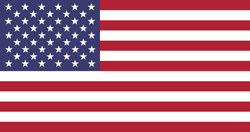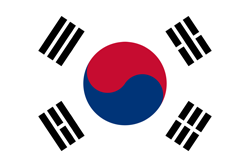pISSN : 1225-1089 / eISSN : 2288-6419
Textile Science and Engineering(Text. Sci. Eng.) is the journal of the Korean Fiber Society.
It was launched in 1964.
It is published bimonthly(February, April, June, August, October and December) in either Korean or English.
Total or a part of the articles in this journal are abstracted in Chemical Abstract Service, DOI/Crossref and Korea Citation Index.
Copyright by the Korean Fiber Society. All rights reserved. Reproduction in whole or in part in any form without permission in writing from the Korean Fiber Society is strictly prohibited.
It is published bimonthly(February, April, June, August, October and December) in either Korean or English.
Total or a part of the articles in this journal are abstracted in Chemical Abstract Service, DOI/Crossref and Korea Citation Index.
Copyright by the Korean Fiber Society. All rights reserved. Reproduction in whole or in part in any form without permission in writing from the Korean Fiber Society is strictly prohibited.
Latest Publication (Vol. 62, No. 5, Oct. 2025)
Recent Advances in Quantitative Crosslinking Density Analysis of Elastomers Using Multi-Quantum Solid-State Nuclear Magnetic Resonance
여상호 정재우
Elastomers, which achieve high durability and excellent elasticity through crosslinked network structures, are indispensable materials widely utilized across various modern industries. Since the physical properties of elastomers are closely correlated with their crosslink density, numerous measurement techniques have been developed to quantify the crosslinking structure, including the swelling method based on the Flory-Rehner equation, tensile testing using the Mooney-Rivlin model with a Universal Testing Machine (UTM), and rubber plateau region analysis via Dynamic Mechanical Analysis (DMA). However, due to the inherent heterogeneity of the actual crosslinked structures in elastomers, there remains a need for a novel analytical approach capable of not only quantifying the crosslink density but also elucidating the crosslinking distribution. In this review, we introduce double quantum nuclear magnetic resonance (DQ-NMR) spectroscopy, which detects nuclear spin signals arising from crosslink-induced double quantum coherence, as a powerful tool to evaluate both the crosslink density and its distribution in elastomers.
This method enables precise quantification of the crosslink density and, through normalization,
provides crosslinking distribution curves that offer deeper insights into the structural
heterogeneity of elastomeric networks. Accordingly, this review outlines the
fundamental principles of DQ-NMR and highlights recent research trends employing DQNMR
techniques to characterize the crosslinking structures of elastomers.
HEMA/PU Structures for Intraocular Lens Applications
한주연 손예진 김주현 서원 송영석
Posterior capsular opacification (PCO) is a common complication after cataract surgery caused by the proliferation of residual lens epithelial cells. This study aimed to develop intraocular lenses (IOLs) with reduced PCO incidence by optimizing material composition and surface properties. Hydrophilic poly(2-hydroxyethyl methacrylate) (HEMA) was crosslinked with poly(ethylene glycol) diacrylate (PEGDA), and its thermal and optical properties were evaluated. The incorporation of PEGDA enhanced crystallinity and mechanical stability, particularly when a 15-minute solvent evaporation step was applied before curing. Furthermore, surface modification with a polyurethane (PU) coating increased hydrophobicity, which is expected to contribute to the suppression of PCO. The PU coating also preserved high optical transparency of over 90% at wavelengths above 400 nm and ensured appropriate stiffness, facilitating surgical handling. These results demonstrate that PEGDA crosslinking combined with PU surface coating improves the thermal stability, transparency, and mechanical integrity of the fabricated lenses. The approach applied in this study provides a practical framework for material design in intraocular lenses aimed at reducing posterior capsular opacification.
Recycled PET-Based Acoustic Films Reinforced with Cockle Shell Powder: Fabrication and Performance Evaluation
양하진 이종윤 박찬욱 서재식 이원준
Introduction of natural mineral fillers into recycled polymer matrices has gained increasing interest due to their potential in developing eco-friendly functional materials. In this study, cockle shell powder, a calcium carbonate-rich biowaste, was incorporated into recycled polyethylene terephthalate (rPET) films to fabricate sound-absorbing composites. Cockle shells were pulverized and characterized in terms of morphology, crystal structure, and particle size. The rPET/cockle shell films were prepared via casting and nonsolventinduced phase separation (NIPS) method. The addition of cockle shell filler improved the sound absorption performance of the films, particularly at higher frequencies. The composite containing 6 wt% cockle shell exhibited the highest sound absorption coefficient while maintaining mechanical integrity. Although the tensile modulus slightly decreased with increasing filler content, the optimized formulation showed a good balance between acoustic performance and mechanical strength. Overall, these results suggest that cockle shell powder can serve as a promising sustainable filler for acoustic applications using recycled polymer matrices.
Viologen-Based Flexible Thin Electrochromic Devices Containing a Liquid Crystal Monomer
최재원 엄수연 진수은 박종승
In this work, flexible electrochromic devices (ECDs) were fabricated by integrating viologen with a liquid crystal monomer (RM82) into an electrochromic ion gel, aiming to enhance both electrochemical properties and mechanical durability. The ion gel was drop-cast onto an ITO–PET substrate, producing a uniform film with an average thickness of about 47 μm. Devices incorporating RM82 demonstrated superior performance compared to those without, showing higher ionic conductivity, good stretchability, and large optical contrast at –1.3 V. Moreover, the RM82-based ECDs sustained stable electrochromic switching for over 12,000 s with less than 2% degradation, whereas the RM82-free devices exhibited reduced optical contrast and poorer long-term stability. These findings highlight that introducing a liquid crystal monomer into the viologen-based ion gel significantly improves the electrochemical efficiency and mechanical robustness of flexible ECDs. This advancement positions them as strong candidates for next-generation thin, lightweight, and durable applications such as smart windows and wearable electronics.
Dyeing Properties, Color Characteristics, and Fastness of Recycled Polyester Fabrics Dyed with Anthraquinone-Based Three Primary Color Dyes for Automotive Interiors
이정은 최지혜 구본학 강유정 송선혜 심지현 최세진
This study investigated the dyeing properties, color characteristics, and fastness of recycled polyester fabrics dyed with anthraquinone-based primary color dyes (Solvent Yellow 163, Disperse Red 86, and Disperse Blue 54). Dyeing was carried out at a total dye concentration of 3% (o.w.f.) with a liquor ratio of 1:10, and benzotriazine type light fastness enhancers were added at concentrations of 2% and 4%. The results showed that dye combinations with a higher proportion of yellow dye exhibited higher K/S values and superior light fastness. In particular, the Y:R (Y2:R1) combination achieved a light fastness rating of grade 3–4 under 126 MJ/m² xenon arc exposure with 4% enhancer. Abrasion resistance, washing fastness, and rubbing fastness were generally rated above grade 4, indicating excellent durability. These findings confirm the applicability of recycled polyester fabrics dyed with anthraquinone-based dyes for automotive interiors, and further optimization is expected to enhance light fastness performance.
Filament Usage Prediction in 3D Printing of Thin-Shell-Structured Manikin Mesh
설인환
Converting a large object such as a human manikin into small pieces can reduce the printing time and filament usage in 3D printing. On the contrary, the smaller thickness of the pieces can lead to more numerical errors in the mesh operation processes. This research proposes a modified algorithm, which can predict filament usage and the optimal object orientation in 3D printing, for a thin-shell-structure human manikin data, even with zero thickness. The new method was verified for a manikin bodice mesh data with 0 mm, 0.1 mm, 1 mm, and 5 mm thickness. The four data’s g-code generation was also checked. The algorithm source code was implemented both for CPU and GPU, and uploaded to Github as open-source.
Nanocellulose Preparation via Eco-friendly Enzymatic Pretreatment and High Pressure Homogenizer
윤철민 전경수 정용일
Nanocellulose has attracted growing attention in recent years due to its renewable origin, excellent mechanical properties, and wide applicability in various fields such as packaging, biomedical materials, and electronics. In the manufacturing process of nanocellulose,
pretreatment is essential to determining the efficiency and quality of the final product. Among these, enzymatic hydrolysis is considered a more environmentally friendly alternative. In this study, we employed a pretreatment method using a mixed enzyme system composed of three types of cellulase enzymes to improve sustainability in nanocellulose production. The nanofibrillation process was performed using a high-pressure homogenizer, which is widely recognized for its effectiveness in producing uniform nanocellulose. Furthermore, the effects of various conditions during enzymatic pretreatment and nanofibrillation on the surface morphology and crystalline structure of pulp were investigated. In particular, the effects of enzyme amount on the crystallinity and surface morphology of the pulp were analyzed using XRD and SEM. The enzymatically pretreated pulp subjected to high-pressure homogenization resulted in nanocellulose with an average diameter of approximately 16 nm. The results emphasize that the degree of enzymatic activity significantly enhances the crystallinity of the pulp, thereby affecting the properties of the nanocellulose.





